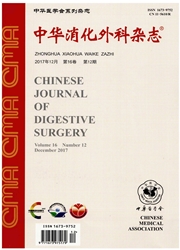

 中文摘要:
中文摘要:
背景 molarless 条件被报导了妥协学习,记忆工作。然而, molarless 条件怎么直接在大脑外皮和马头鱼尾的怪兽上影响中央神经系统,和功能的后果,仍然保持不清楚没详细被描述。这研究的目的是与在一个双边的 molarless 条件以后学习和存储器赤字发现分子的机制相关通过手术在加速老朽的 mice/prone8 ( SAMP8 )被导致了鼠标,它可以最终提供一个试验性的基础因为老年的 dementia.Methods 鼠标的临床的预防是任何一个假冒操作或使遭到了完成臼齿的移动。动物的身体重量每天被监视。学习能力和记忆在 1 st 的结束在水迷宫测试被测量,第二,并且在外科以后的第三个月。一旦在 molarless 组的显著地延长的逃跑潜伏被检测,运动活动在田野测试被检验。随后,动物被将斩首,外皮和马头鱼尾的怪兽为测量导出大脑的神经营养的因素( BDNF )的表示层次的西方的弄污被把, tropomyosin 联系了 kinase B ( TrkB ), BDNF.Results 稍微更低的重量的高亲密关系受体一致地在 molarless 组被观察,但是在在二个组( P0.05 )之间的重量没有重要差别。与假冒的组相比, molarless 组在水迷宫展出了变长的逃跑潜伏在外科以后测试三个月,而在运动活动的差别都没被观察。在外皮和马头鱼尾的怪兽,同时, BDNF 层次显著地在 molarless 组(P0.05 ) 被减少;但是它的受体的表示, TrkB,不显著地 affected.Conclusion 这些结果建议 molarless 条件损害了学习并且在 SAMP8mice 的记忆能力在牙齿抽取以后的三个月,和这效果被显著地减少的 BDNF 表示在外皮和马头鱼尾的怪兽伴随。
 英文摘要:
英文摘要:
Background The molarless condition has been reported to compromise learning and memory functions. However, it remains unclear how the molarless condition directly affects the central nervous system, and the functional consequences on the brain cortex and hippocampus have not been described in detail. The aim of this study was to find the molecular mechanism related with learning and memory deficit after a bilateral molarless condition having been surgically induced in senescence-accelerated mice/prone8 (SAMP8) mice, which may ultimately provide an experimental basis for clinical prevention of senile dementia.Methods Mice were either sham-operated or subjected to complete molar removal. The animals' body weights were monitored every day. Learning ability and memory were measured in a water maze test at the end of the 1 st, 2nd, and 3rd months after surgery. As soon as significantly prolonged escape latency in the molarless group was detected, the locomotor activity was examined in an open field test. Subsequently, the animals were decapitated and the cortex and hippocampus were dissected for Western blotting to measure the expression levels of brain-derived neurotrophic factor (BDNF) and the tropomyosin related kinase B (TrkB), the high affinity receptor of BDNF.Results Slightly lower weights were consistently observed in the molarless group, but there was no significant difference in weights between the two groups (P〉0.05). Compared with the sham group, the molarless group exhibited lengthened escape latency in the water maze test three months after surgery, whereas no difference in locomotor activity was observed. Meanwhile, in the cortex and hippocampus, BDNF levels were significantly decreased in the molarless group (P〈0.05); but the expression of its receptor, TrkB, was not significantly affected.Conclusion These results suggested that the molarless condition impaired learning and memory abilities in SAMP8mice three months after teeth extraction, and this effect was accompanied by si
 同期刊论文项目
同期刊论文项目
 同项目期刊论文
同项目期刊论文
 Increase of cytosolic calcium induced by trichosanthin suppresses cAMP/PKC levels through the inhibi
Increase of cytosolic calcium induced by trichosanthin suppresses cAMP/PKC levels through the inhibi 期刊信息
期刊信息
